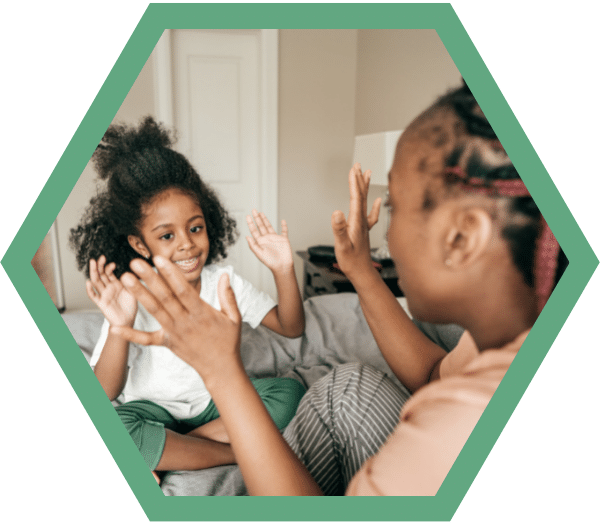Developing understanding
Children will understand words long before they are able to say them

It is important that you help your child to develop their understanding as a foundation for learning to speak.
Activities to increase understanding
Aid your child’s understanding by using gestures alongside words, such as wave with ‘hello’ and ‘goodbye’.
Give your child simple instructions to follow, such as ask for one toy from a selection.
Use short, simple sentences when you talk to your child to help them to understand.
Activities to encourage understanding
Naming activities
Try ‘posting’ toys, objects or pictures into a cardboard box. Name some objects yourself and see if your child will name others as they posts them.
Pull toys out of a bag slowly, one at a time and encourage your child to name them.
You can ‘hide’ a few toys around the room and ask your child to name them as they find them.
Encourage your child to name their toys as you put them away.
Look at picture books together. You can name some pictures and see if your child will name others.
Choose a word to work on, for example, the name of a toy, animal or person. Choose a toy or activity that will encourage the use of this word and play with the toy in several different ways using simple sentences and repetition of word, such as ‘teddy walk’, ‘teddy jump’ or ‘teddy eat’.
Activities to encourage ‘more’
If your child wants more of something, such as milk, and holds out a cup, you say ‘more?’ with a questioning tone. Exaggerate the sound pattern of the word. Then pour some out. Gradually encourage your child to say ‘more’.
At mealtimes, give your child a small amount of food or drink to start off with so that they need to ask for more.
When playing with a simple puzzle or building a tower of bricks, only pass your child one piece at a time. Say ‘more?’ to your child. Gradually let them have the next piece as they ask for more. Try the same with any activity which interests your child, such as blowing bubbles or listening to music.
Each of the above situations can be developed to encourage two word phrases, such as ‘more milk’, ‘more juice’ or ‘more swing’.
Activities to encourage ‘gone’
When a person leaves, encourage your child to say ‘bye [person’s name]’, with your hand waving and say ‘[person’s name] gone’, when the person has left.
When you are putting toys away with your child, say ‘all gone’ or ‘toys gone’. Your child may try and copy you. In the same way, say ‘all gone’ when your child finishes eating.’
Put out a couple of toys. Ask your child to shut their eyes and hide one toy behind your back.
When your child opens their eyes, say ‘gone!’ and encourage them to find the toy. Take it in turns to let your child hide the toy.
Activities to encourage ‘on or off’
Encourage these words when you or your child switches on the television, light or radio on or off, such as ‘hoover on’, ‘light off’ or ‘music on’.
Encourage your child to say ‘on’ when you put on shoes or coat and ‘off’ when you remove them.
Put something on your head, such as a funny hat. Take it off. Say ‘hat off!’.
Then put it on your child’s head and say ‘hat on!’. Then take the hat off your child’s head, saying ‘hat off’. Put the hat back on your head and wait for your child to say ‘hat off’!’ before taking it off.
Activities to encourage ‘go’
Use ‘ready, steady, go!’ in play, such as when pushing cars or dropping a ball.
When your child is familiar with this, leave ‘go!’ off the end of the sentence.
You can also try and complete the phrase.
You can also try this with familiar songs or nursery rhymes to encourage different words.

This guide has been based on the guide developed by Cambridgeshire Community Services NHS Trust.
Learn more at www.cambscommunityservices.nhs.uk

